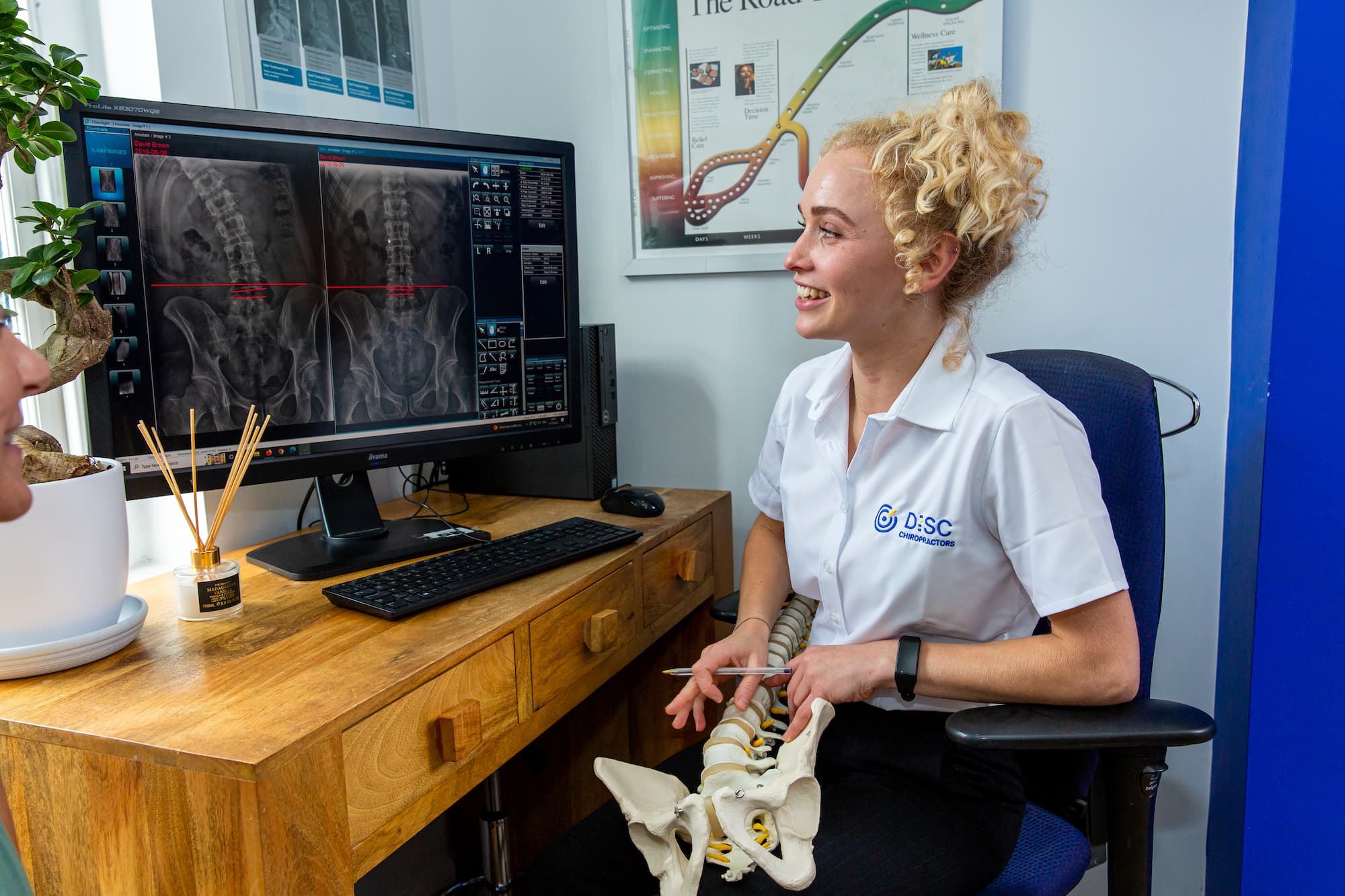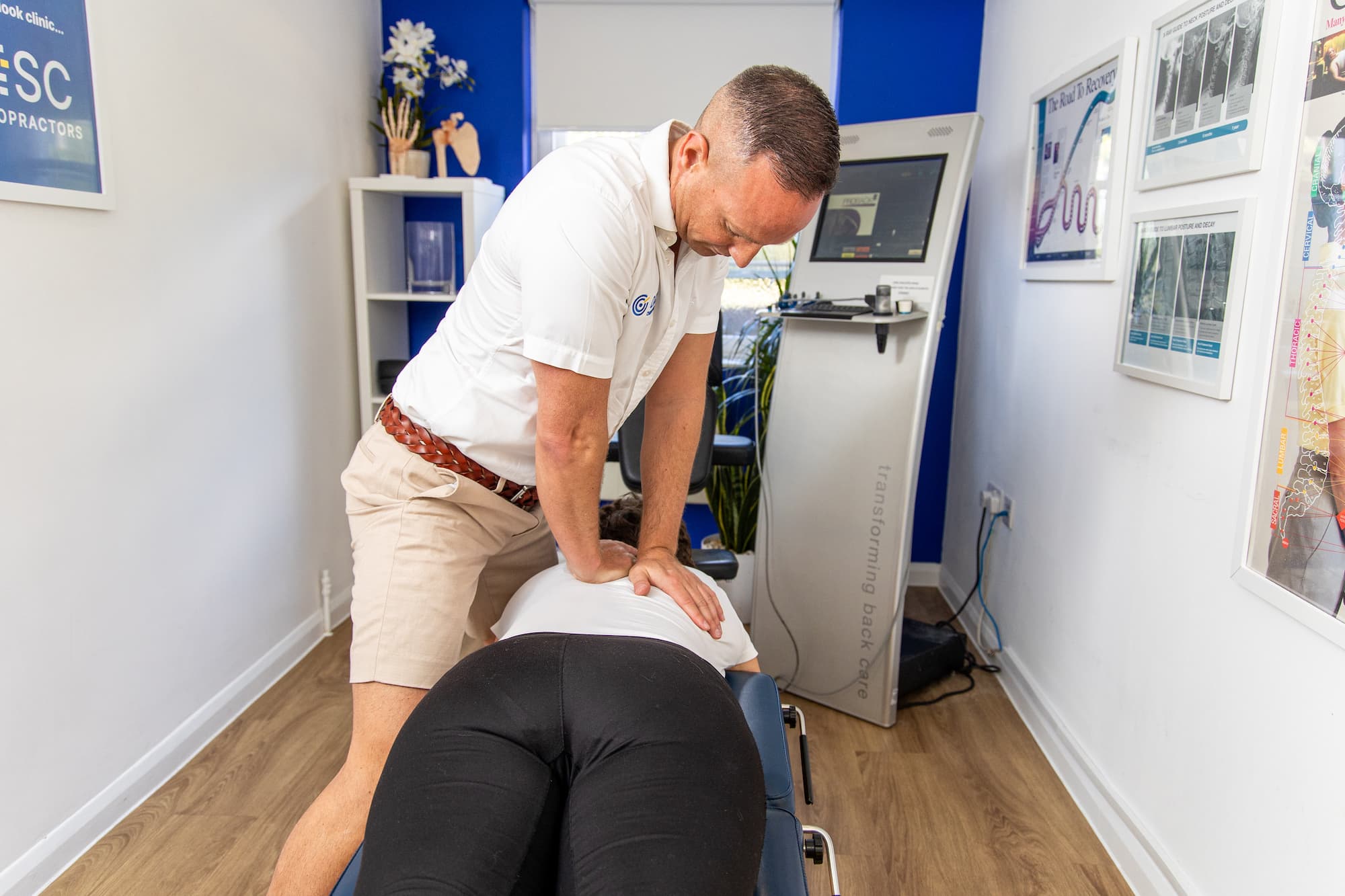Expert Sacroiliac Dysfunction Treatment
WHAT IS SACROILIAC JOINT DYSFUNCTION?
This is where the joints that connect the spine to the pelvis, known as sacroiliac joints become either locked together or too loose and create dysfunction and pain.
The sacrum is the wedge-shaped foundation stone at the base of the spine, it provides the keystone that completes the pelvic ring via two joints known as Sacroiliac Joints. Their function or lack of function is a much-debated topic, as it has apparently very little movement but instead acts as a shock absorber or suspension to mitigate the stresses from above and below.
Other than in cases of unusual inflammatory conditions (e.g., ankylosing spondylitis), or direct trauma, Sacroiliac Joint Dysfunction is usually a secondary condition, meaning that there is usually a different underlying issue that has occurred before this condition presents.


what are the common causes of sacroiliac dysfunction?

Disc Herniation

Leg Length Asymmetry

Prolong Sitting

Muscle Imbalance

Pregnancy

Degenerative Disc Disease

Pelvic Floor Issues

Hip Dysfunction

What Are the Symptoms of Sacroiliac Dysfunction?
Patients with sacroiliac joint dysfunction tend to experience:
- Pain in the lower back or buttocks
- Stiffness in the lower back or hips
- Difficulty standing up from a sitting position
- Pain when climbing stairs
- A feeling of instability in the knees
It is notable that pain from the sacroiliac joint is often confused with a lumbar disc injury or sciatica because the symptoms are similar. Furthermore, it is entirely possible to have both a sacroiliac dysfunction that exists hand in hand with an ongoing disc injury, making a thorough examination process essential to identify all the failing tissues not just the most obvious cause.
Just like in a disc injury, SIJ pain can create, both sharp pain or dull aches, in the buttock, groin and can even travel down to the upper calf, however unlike many disc conditions, SI dysfunction generally causes no tingling or weakness.
How do Chiropractors diagnose Sacroiliac joint dysfunction?
The first step in treating any condition is to find the underlying cause, often the pain experienced by a patient is the last “domino” to fall in a cascade of reactions. A thorough examination at our DISC Clinic in Surbiton will help not only identify exactly what is generating the pain but also aim to understand its root cause.
The sacroiliac joint is often impacted by other joints, such as intervertebral disc joints failing. Once Disc injuries have been ruled out chiropractors have a specific set of orthopaedic tests that target the Si joint to identify painful restriction or more commonly, relative instability.

How common is Sacroiliac joint pain?
Research using Spinal Injections found:
39% of Lower Back Pain originated from the Discs.
15% of Lower Back Pain originated from the Facet Joints.
13% of Lower Back Pain originated from the SI Joints
The remainder were unresponsive
Schwarzer Et Al – Spine Journal
One major issue with SIJ pain is that unlike many musculoskeletal complaints that just need better movement, often SIJ’s have an inherent instability that needs to be dealt with from a support and rehabilitation perspective first.


How do you fix Sacroiliac Dysfunction?
Precise spinal adjustments aim to restore proper alignment to the sacroiliac joint. By applying controlled force, chiropractors can correct joint dysfunction. Depending on the severity and chronicity of the case, manual corrections might take hold and effect relatively quickly but in cases of long-term or lax ligaments, additional support might be required to provide a lasting solution.
The key here is understanding the cause and type of dysfunction, too much or too little movement. Also, is the pain local to the joint or travelling down the leg due to an associated disc/nerve inflammation?
At The DISC chiropractors, Surbiton we have developed specific tests and protocols to deal with the various types of Sacroiliac dysfunction, which can involve:
- Chiropractic Adjustments
- Instrument-Assisted Adjustments
- Laser Therapy
- Decompression Therapy
- Support Belts
- Pelvic Floor Rehab
- Hip Optimisation
Contact Us
If you would like to find out what we could do to help your Sacroiliac Dysfunction, please click the icon below to book a thorough consultation to evaluate your case.
